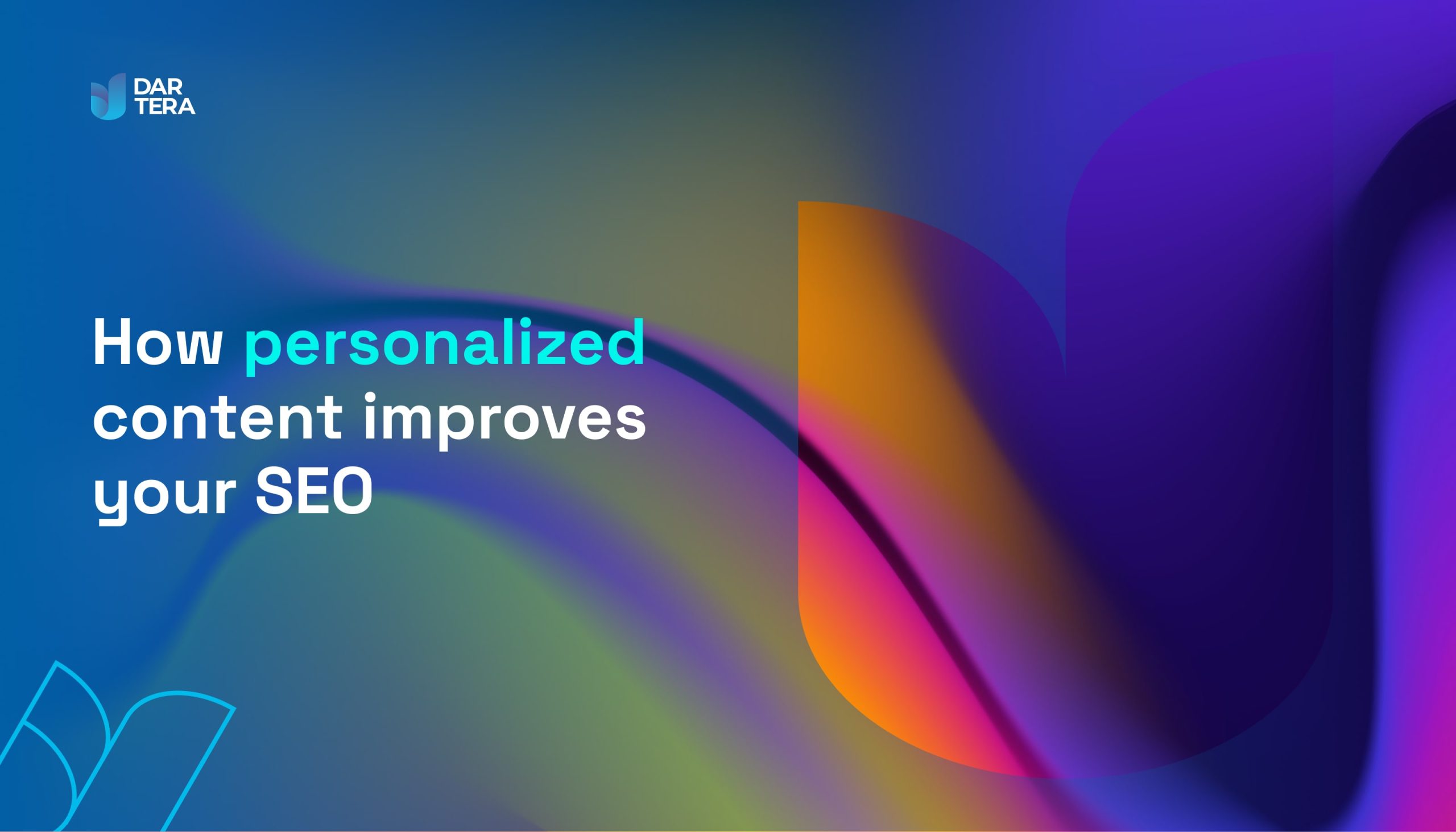How personalized content improves your SEO

Call it a leap in the record, but the topic of person-first content just won't let us go. As content publishers and consumers, we spend an inordinate amount of time reading. When a post - a blog post, an article, a tutorial - breaks through the tide of mediocrity on the Internet, it's like watching an Olympic athlete put his heart and soul into his sport. You learn who this athlete is and what he values just by watching him. Even if they don't take home a medal, you don't forget the person you saw on the screen.
In both the Olympics and content marketing, recognition is key. Writing your website's blog posts, articles, and tutorials with the reader in mind is just as important as any other branding and marketing you can do - if not more so.
Every Internet user is a searcher, and searcher intent dominates the world of search engine optimization. Interestingly, if you prefer a person-centered approach, you can even go beyond the world of SEO and into a world of shared emotions like curiosity and satisfaction that define the human experience.
While it's easy to talk about creating people-friendly, searcher-friendly content, what does that actually mean? It turns out that there are some very specific things you can do once you know what constitutes the person-first approach.

What is person-centric content?
Generally speaking, content that is primarily about what people care about. If it were about movies or novels, it would be about the paradox that underlies human existence. It would be about love. Likewise, it would be about the visceral emotions, such as the feeling of surprise.
But it's all about web content, and luckily your brand doesn't have to be Steven Spielberg to make people happy. Person-centered content:
- Corresponds to the intent of the seeker;
- is accessible to all readers and consumers;
- is structured, written, and formatted in a way that makes consumption seem effortless;
- not alienate anyone;
- is empathetic.
On the Internet, people are interested in information, but also in entertainment. Many people are also interested in inspiration. I recently saw a blog post on an eye care site about why onions irritate you to tears when you cut into them. This is something that almost everyone can identify with.
The author conducted her own entertaining experiment to find out which method made her cry the least. I gathered some super-specific scientific information, some actionable information, and I'm not kidding, I was inspired to cook with onions afterward just so I could use the recommended method and cut one without crying.
Surprise! This is a trend post for the eye care site.

How does personalized content improve SEO?
Ultimately, search engine optimization is about two things: Providing content that attracts people's attention and meeting the requirements of search engines.
In the latter case, SEO experts usually focus on Google; in the former case, we often start with keywords that people use. It turns out that people-related content not only meets all the criteria - it's the star among the two SEO facets. Since we're in the process of putting people first, let's now look at how person-centric content helps searchers themselves.
Optimizes the keyword coverage of your website
Wait a minute, you say, isn't keyword content an outdated, search engine bot-centric approach? Where are the people here?
Ultimately, people enter the search queries that become keywords. The outdated, money-focused approach is to focus only on high-volume, high-money keywords. Most assume that they are focusing on those big keywords that have to do with their niche. In theory, they should be able to create content that targets high-converting keywords, right?
Wrong. This approach is outdated because it ignores the people who are out there typing long-tail keywords and other information-seeking queries. To return to the example from earlier: The question "Why do you cry at onions?" does not necessarily lead to the sale of glasses. But it does help a person understand something (in the case of onions, a literal pain point) that is bothering them.
Over time, as you answer more search queries and try to help people first, your broad keyword coverage will turn into authority, which can earn you higher rankings for your most important keywords.
Pushes you to prioritize user experience (UX)
User experience on the page is now a ranking factor for Google. And when you create people-centric content, you focus on usability, which means users will have a high-quality page experience.
With the Page Experience Update, Google makes sure that the pages on your site meet the Core Web Vitals. These include visual stability, load time and interactivity. Not many people want to be bombarded with dynamic third-party ads, instant-play videos, and other interruptions that change the visual stability of a page. You don't want a slow loading page either. They want content they can interact with in real time.
Your "person-first" pages meet all of Google's core web vitalities because you want to communicate with the user directly and in detail. This means that there are no interruptions due to sales tricks. You want the user to be able to dive into the page and get what they want.
Motivates you to continuously create good content
As you continue to put yourself in the shoes of the searcher, you develop consistency in your content creation. They deal with long-tail search queries. They create blog posts, videos, long-form content, and white papers that comprehensively answer search queries. You let your creativity run wild, and over time you get better and better.
This is where the next piece of the SEO puzzle comes into play. Good content that intrigues readers is linkable content. This is the content that just about everyone wants to consume. It all depends on what interests them today.
Backlinks - links from other websites - are one of Google's most important ranking factors. But the search engine is not only looking for any old backlinks. You need organic links that are not created to manipulate the system. The way to get these links is to consistently create people-oriented content. Since people can use this content for informational purposes, they are more likely to link to it from their website.

How to create person-centered content
Like an onion, there are many layers to people-oriented content. As mentioned earlier, one of the safest ways to help people is to start with accessibility.
Accessibility as a priority
Web content accessibility is an important part of UX and you are required by law in various countries to make your website accessible. When it comes to content creation, there are ways you can make it easier for everyone, including people with disabilities, to access the information:
- Format with screen readers in mind: put semicolons or periods at the end of list items so that the screen reader does not read your entire list as one sentence. Make sure the link anchor text is easy to understand even without context. Consider having a screen reader check your content for accessibility before publishing.
- Automatically add subtitles to videos: People with hearing disabilities should be able to easily understand what is going on.
- Use alt text for images: Write a description of each image on the page for those who use screen readers.
Also, use headings, subheadings, and bold lists to make your text manageable. Consider using quotation marks for important information. This improves accessibility for anyone who needs to skim your content.
Be empathic
Since empathy with your content is not quantifiable, it can be difficult to put this advice into practice. You just need to think from the perspective of the seeker. Step back from your familiarity with your niche and look at it with different eyes. Consider the following when creating empathetic content:
- Who is the customer, the reader or the content user? If you know your audience, you can put yourself in their shoes.
- What are the user's problems? Every user has their "why" - their reasons for accessing a page of content; the better you understand those reasons, the more helpful the content will be.
- How much information do they need to fully answer their request? Think about what you want to know when you have an inquiry, not just looking for a standard answer. It's important to have a series of long articles because some people really want to dive deep into a topic. At the same time, do not append more words and information than necessary.
- How do you make your content easily digestible for a wide audience? If there's one thing we can all relate to, it's the feeling of just dropping in, taking something with you and moving on.
The importance of this last point cannot be overstated. Even if it is long content, you should include the formatting elements we mentioned at the end of the accessibility section above. Since headings and subheadings often represent search queries, make an effort to address these queries and provide answers at the beginning of each section.
Be inclusive
"Inclusivity" is the golden rule wrapped up in a single word. How would you like to be treated when you are online? An inclusive approach to content asks you to respect all people.
It's hard to imagine a brand not wanting to respect someone. But there are times when even the best content creators don't bother to figure out exactly how to refer to someone. That's a shame, because inclusivity is more important than deadlines. Here is what you can do:
- Research categorical and intersectional identifiers: look for an author or group that is an authority among the people you are referring to. This could be a blogger, a nonprofit organization, or an activist. For example, how does an author who is also of indigenous descent relate to himself and others who are of the same ethnicity? If they want others to call them that, then do so in your content.
- Use pronouns wisely: "They" is becoming a popular pronoun because writers don't always know what a person prefers. When in doubt, use "you" instead of "he" or "she." If you are talking about a hypothetical person and a case arises where you need to use a gendered pronoun, prefer "they".
- Avoid the language of victimization: you are not "struggling with something, suffering from something, or a victim of something." You are a "survivor of trauma"; you are "living with pain"; you are "a person with a disability"; you have been "diagnosed with schizophrenia"; you are being "treated for post-traumatic stress disorder."
- Always make sure that the information is up-to-date and authentic: Identifiers are a moving target because people are not static. The more current your reference point is, the better. Perhaps more importantly, make sure your source of information is an authentic person and not an author whose identity is unconfirmed.
Inclusion can be difficult because it can be hard for everyone to find the right words in an ever-changing situation. Your purpose is your guiding principle. The good faith and hard work you put into engaging everyone with your words will show when people read your content.
Eliminate incomprehensible language
Whether it's jargon, technical language, or hard-to-decipher sentences in the passive voice, if the reader can't do anything with it, throw it out. You know this stuff when you see it. As you read the text, your brain becomes clouded. Revise the text to make it clearer and make sure it is not flimsy phrases.

The conclusion
Content that is person-centric is exciting. The more time you spend on content marketing and SEO, the more you realize that a mindless, automatic approach to content is boring. Think ahead when it comes to people-oriented content. You know that not all people want to read a blog post, so put together a podcast. You know that many people prefer visual content, so create videos. You know there is a person behind every search query, so try to understand what that person needs.
We humans are moody, temperamental, inquisitive creatures. Perhaps that's what's so exciting about person-centered content: In a world full of complex people weaving an intricate web of emotions, every piece of person-centered content is a reflection of the complex person who created it.








